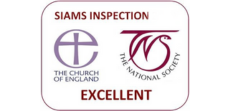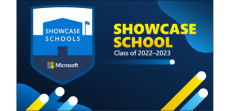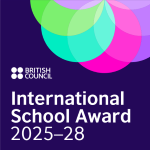Computing at St Andrew's
At St Andrew’s Primary School we endeavor to use technology as much as possible to enhance our learning and to develop our skills within the curriculum. We follow the computing curriculum in a variety of ways. We follow the scheme of work on the platform Purple Mash and also enhance it in cross-curricular ways. We are fortunate enough to have both iPads and laptops to use in for lessons in our school.
Computing Curriculum Overview
See all the different learning we have been doing in our Computing lessons:
Microsoft Showcase Incubator
Our vision for St Andrew's is to become a Microsoft Showcase. We are currently in the incubator school program and are working towards becoming a Microsoft Showcase School. St Andrew's have purchased 1:1 devices for the whole of year 6, which has helped develop both their learning and computing skills, across a variety of subjects.
We have been using different Microsoft apps to develop our learning and understanding. Here is an example of some of the work the classes have completed.
The objectives for the National Curriculum are stated in the table below:
|
Early Years |
Areas |
Key Stage 1 |
Key Stage 2 |
|
In the Foundation Stage, the Information Communication Technology requirements stated in the Knowledge and Understanding of the World element of the Early Learning Goals Foundation Curriculum, are covered in continuous units. A summary of the objectives are: - Recognise that a range of technology is used in homes and schools - Use a simple application on a computer or mobile device - Use computing devices to interact with age-appropriate applications - Create simple representations of events, people and objects.
|
Computer Science |
Understand what algorithms are; how they are implemented as programs on digital devices; and that programs execute by following precise and unambiguous instructions. Create and debug simple programs. Use logical reasoning to predict the behaviour of simple programs |
Design, write and debug programs that accomplish specific goals, including controlling or simulating physical systems; solve problems by decomposing them into smaller parts. Use sequence, selection, and repetition in programs; work with variables and various forms of input and output. Use logical reasoning to explain how some simple algorithms work and to detect and correct errors in algorithms and programs. Understand computer networks including the internet; how they can provide multiple services, such as the World Wide Web. Appreciate how [search] results are selected and ranked. |
|
Information Technology |
Use technology purposefully to create, organise, store, manipulate and retrieve digital content. |
Use search technologies effectively Select, use and combine a variety of software (including internet services) on a range of digital devices to design and create a range of programs, systems and content that accomplish given goals, including collecting, analysing, evaluating and presenting data and information. |
|
|
Digital Literacy |
Recognise common uses of information technology beyond school. Use technology safely and respectfully, keeping personal information private; identify where to go for help and support when they have concerns about content or contact on the internet or other online technologies. |
Understand the opportunities [networks] offer for communication and collaboration. Be discerning in evaluating digital content. Use technology safely, respectfully and responsibly; recognize acceptable/unacceptable behaviour; identify a range of ways to report concerns about content and contact. |
.png)
.png)
.png)

.png)
.png)
.png)
.png)
.png)
.png)
.png)
.png)
.png)
.png)
.png)
.png)
.png)



.png)
.png)
.png)
.png)
.png)